Home »
Misc »
How to be a good ball handler in basketball
How to be a good ball handler in basketball
5 Things You Need To Know To Be a Great Ball Handler
By Jeff Haefner
You can be an extremely effective ball handler by knowing and practicing 5 things. Most players and coaches make
things too complicated. But dribbling effectively is simple. You don't need lots of moves. You just need EFFECTIVE moves.
Here's all you need to know to be effective at any level.
1 - You need to develop a feel for the basketball.
Developing a feel for the ball consists of drills that are stationary and slow moving. You will improve your hand-eye coordination, hand quickness, ambidexterity, throwing, catching and other important aspects of ball handling.
These drills consists of the Maravich series, one-ball dribbling, one-ball dribbling through cones, two-ball dribbling, two-ball dribbling through cones, tennis ball dribbling, and the Steve Nash passing series.![]()
These drills are also great to put at the beginning of your warm up as a stepping stone to more intense drills.
A huge mistake that many players and coaches make is that they spend too much time on this. While it is important, especially for beginners, limit yourself to 5 to 6 minutes of each practice. The reasoning is that you can get very good at these drills, but you neglect the components below, you won't have the ability to handle game situations. If you can dribble 3 basketballs while juggling 5 tennis balls at the same time, it looks cool and it is a neat circus trick that is great for marketing, but it is a circus trick. It is not going to make you a better basketball player. The majority of your ball handling should be functional which means that they simulate game-like situations. Can you get down the court in 3 to 4 dribbles with either hand? Can you stop on a dime? Can you change speed and change directions like Chris Paul?
If you are able to dribble 3 balls and juggle 5 tennis balls at the same time, I would say that your hand-eye coordination, dexterity, and hand quickness are extremely good and you probably don't need to focus on them any more.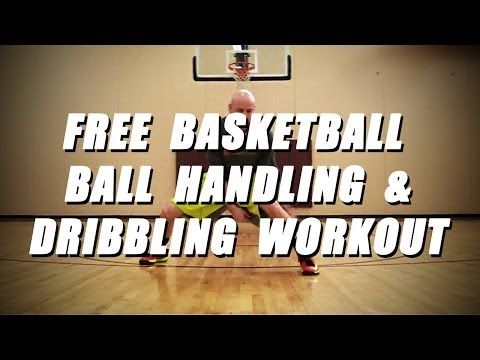 You probably should spend more time on shooting, footwork, athleticism, and functional ball handling.
You probably should spend more time on shooting, footwork, athleticism, and functional ball handling.
2 - You must be able to dribble the ball down the court at any speed (all the way from walking up to sprinting) with both hands with your head up.
Pretty simple but important, right? You can simply dribble up and down the court at different speeds.
3 - You must be able to change your pace.
It's good to incorporate change of pace in your dribbling drills.
Chris Paul is the
expert at changing speeds (pace). That allows him to get the defender off balance.
Practice changing the pace from walking, slow, medium, fast, and full speed. You can change the pace from slow to fast, medium to full speed, and any
other combinations you can imagine.
4 - You must be able to dribble while moving backwards.
So now instead of going forward, you need to be able to back out of traffic and so on. That's where the
back up dribble comes into play.
Simply, get in a position where you are protecting the ball and shuffle forwards and backwards up and down the court.
That's where the
back up dribble comes into play.
Simply, get in a position where you are protecting the ball and shuffle forwards and backwards up and down the court.
Next, you can practice running forward at a faster speed, come to hockey stop, and shuffle a couple of steps backwards.
Mix it up so you can handle any situation.
5 - You must have a primary dribble move and a counter dribble move.
If you perfect a go-to move that's very difficult to stop, good defenders will adjust to stop it. That's when you add your counter move to completely
keep the defender guessing.
I prefer the cross over as the primary move and the inside out as the counter move. You might use the hesitation move and the crossover.
That's it! Perfect those five things and when it comes to dribbling, you'll have the dribbling ability to handle almost any situation. Should you also
practice other things for ball handling? Sure. Now do you need apply the technical skills to competitive drills to handle game situations like transition, ball screens, handling traps, etc.? Yes. Do you need to improve your athleticism to make you a better player in every aspect of your game? Yes. But I'm telling you, that these are five extremely effective methods to give you the technical skill to handle any situation.
Now do you need apply the technical skills to competitive drills to handle game situations like transition, ball screens, handling traps, etc.? Yes. Do you need to improve your athleticism to make you a better player in every aspect of your game? Yes. But I'm telling you, that these are five extremely effective methods to give you the technical skill to handle any situation.
You can use the back up dribble all the time -- you use it when approaching a trap, when approaching defensive traffic, when getting cut off in the lane, when breaking the press, when breaking a player down one on one, etc.
You can then incorporate the cross over in lots of situations. If you advance the ball and get cut off you can back up dribble and then cross over to break down your man and blow by him. You can cross over to change directions and bring the ball to the other side of the court. You can cross over to the passing angle to your teammate. You can cross over to split a ball screen. You can cross over on the fast break to get by the defender. You can cross over to eventually set up your counter move (the inside out). So next time instead of crossing over, fake out the defender by giving the inside out move and then blow by the defender.
You can cross over on the fast break to get by the defender. You can cross over to eventually set up your counter move (the inside out). So next time instead of crossing over, fake out the defender by giving the inside out move and then blow by the defender.
You still need to practice a lot, but I think this will simplify your life greatly by focusing on a few really effective dribbling techniques instead of
trying to practice all kinds of moves and techniques that don't really help. The techniques above are the the most effective dribbling moves that I know.
How To Become A Great Ball Handler
If you'd like to become a great ball handler, check out the Progressive Ball Handling & Footwork Workouts App.
It provides a step-by-step process with professionally designed videos and workouts. It has over 200 drills and 24 levels of workouts.
What do you think? Please leave your thoughts and comments below.
20 Things You Need To Know To Be A Great Ball Handler
Most sports today are focused on mastering an object as such, and this object is undoubtedly the balls, from the football or also known as soccer, to baseball. Others need a very special technique to be able to perform.
Whose techniques are very managed by people who have years of training, and that is why if you want to be part of any of the countless sports that handle a ball.
You need to start the practices from now on so that with time, you can improve and adapt your body to obtain the necessary memories, and thus, to measures that you measure and assess performance, you can see how much you have advanced.
These ball-handling drills always need a professional coach who has the experience to carry them out without any eventuality, which is why you should also have one that gives you confidence and above all that is very responsible.
Since this person who knows the field and the strategies to evolve in the practices and make the handling of the balls effective, is the key to obtaining a correct, adequate training and especially according to the capabilities of your body.
Because if you talk about capabilities, it is obvious that not everyone is equal, you are not equal to your peers, and the difference lies in many things, weight, size, body type, race, muscular endurance, cardiovascular and much more.
All these issues are very taken into account when a person decides to start exercises for handling the ball, and thus achieve performance in the sport where it has to be used.
Why Is The Physiognomy Something Important In The Management Of Balls?
It is one of the questions that have a lot of weight today and is that the difference of the bodies is something that is taken into account a lot before the coach begins with the routine, which must be part of the person’s life to train.
A series of physiological studies are carried out, such as weight, height, muscular endurance, cardiovascular, pulmonary, and other evaluations, so that the coach has a notion of your psychophysics.
And it can implement personalized exercises; therefore, if you are about to start a routine, your coach must know your body capacity so that the exercises to be performed are consistent with your resistance, and you can perform with them.
Most coaches look for people with high physical opacities so that the intensity of the practices is adequate, and it is achieved in a short time. Still, individual capacity and tolerance will always be respected.
Therefore you must go a step ahead of others. Before training officially, you can train your body little by little with exercises and personal routines that will improve your capacity and personal resistance.
When you have considerable time and feel ready and able to focus on official training, then they can choose to use a personal or group coach to teach you the Ball-handling drills.
What is sought with these burials is that the good handling of the ball is developed and that you have good coordination between the ball, your hand, and your sight, and although the sight for many is something silly to practice.
It is part of the key strategies for you to be able to place the ball where your eyes focus. Still, these training sessions are not easy, and they are increasingly demanding since you will be required to force the body to change yourself and thus make it yield to as the training progresses.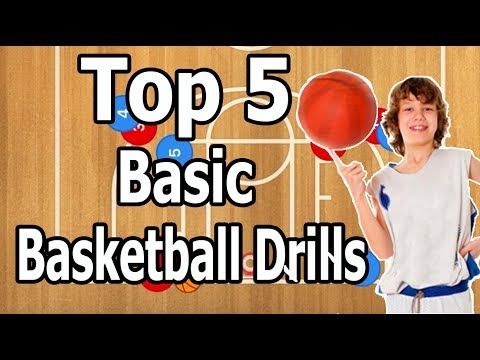
Development Of Good Hand-Eye Coordination
As mentioned at the beginning, if you want to do a good ball-handling and have performed in practice, you must force your body to adapt to the requirements that you demand gradually.
And it is that among the many pieces of training, part of them focus on your vision and hands being coordinated so that they do not need to see the ball to know it, but getting to this point is something difficult but not impossible.
Since with perseverance and a lot of perseverance, you will be able to improve considerably and very noticeable when you put a grip on the exercises performed since what is sought with them is that you achieve full control of the ball with both hands and fix your eyes on the launch site.
So you do not lose sight of the main point where the ball should be, and your cognitive system helps you better in the distance, speed, and intensity with which you must throw the ball, to deposit it in its destination.
As you move forward, you will notice that using the ball-handling drills, you will gradually improve the skill in controlling the ball in the hands, and when this is already overcome, the other stage comes.
With a little intense practice and exercises, you have to improve the relationship of sight and your cognitive system so that when you no longer see the ball but dominate it, you can throw it and hit the final goal.
Good Practice, You Can Never Miss
The practice is an important thing that you can never miss, and that is that with it, you as the future dominator of the ball, through the same anger having the dominance and skills necessary to be able to perform later.
For this reason, it is important that it never be absent, that it is constant and above all with the intensity and exercises that you can tolerate, to perform as you go gradually, practice and whenever you can include new challenges that will help you to advance and see the progress.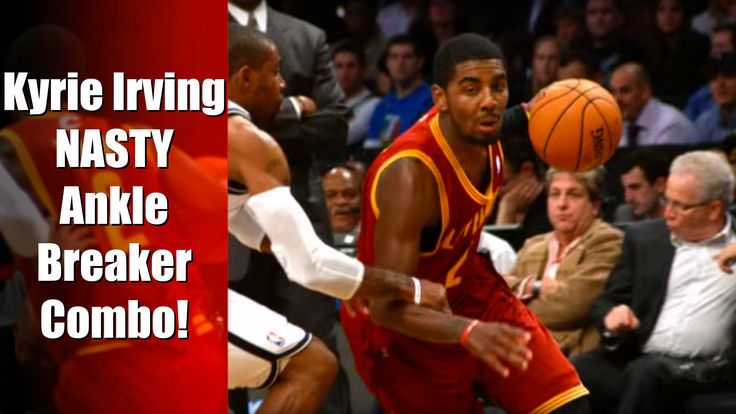
Agility, Control, And Speed Between Both Hands
It is common, and if you are a lover of games to see the professionals as they change the ball from one side to the other, this is thanks to the coordination and development of agility and control between both hands.
But getting to this point, it is necessary to apply exercises where your motor perception works at full throttle, so that you can just feel and think without needing to see, position the ball in each place without having the desire to be looking at a fixed place and lose sight of what’s important.
Ball handling exercises (ball-handling drills) has a lot to do in this case, because through it and the practices carried out, the person develops his motor control.
Don’t Forget Your Motor Evaluations
Motor evaluations should always be ahead. To the bad of many, there are certain limitations in nature at the muscular level, and it is these same limitations that must be excluded before starting this training.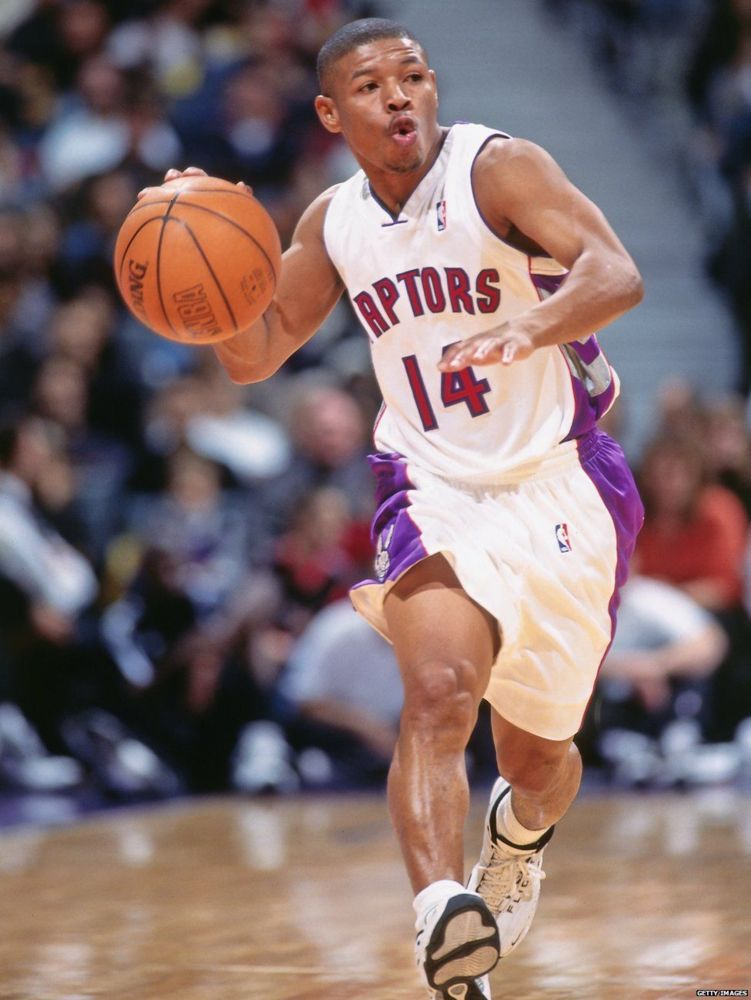
Because these will make it impossible for you to continue giving up and no matter how much you look for the solution, it will be a bit difficult since you will not have the physiological help to perform, therefore it will be a little difficult to develop such a virtue to be able to dominate the ball.
But, your scenario is different and you have a full motor, and nervous capacity, healthy and that responds effectively to the exercises, in a short time everything will evolve. With dedication, the results will be consolidated.
Constancy And Perseverance, Which Will Move You Forward
Consistency and perseverance is the key to success in this type of exercise to dominate the ball, and that is that the muscle, the autonomic nervous system, and the cognitive system, need consistency and repetition for the body to adapt to it.
- Direct Control Over The Throwing Of The Ball Towards Its Destination
You have to be one of the people who manage to make a firm, direct launch, and so much hesitation, with the necessary force and total control since the ball, must not be deflected, and they have to go in a direct launch with the appropriate speed and direction.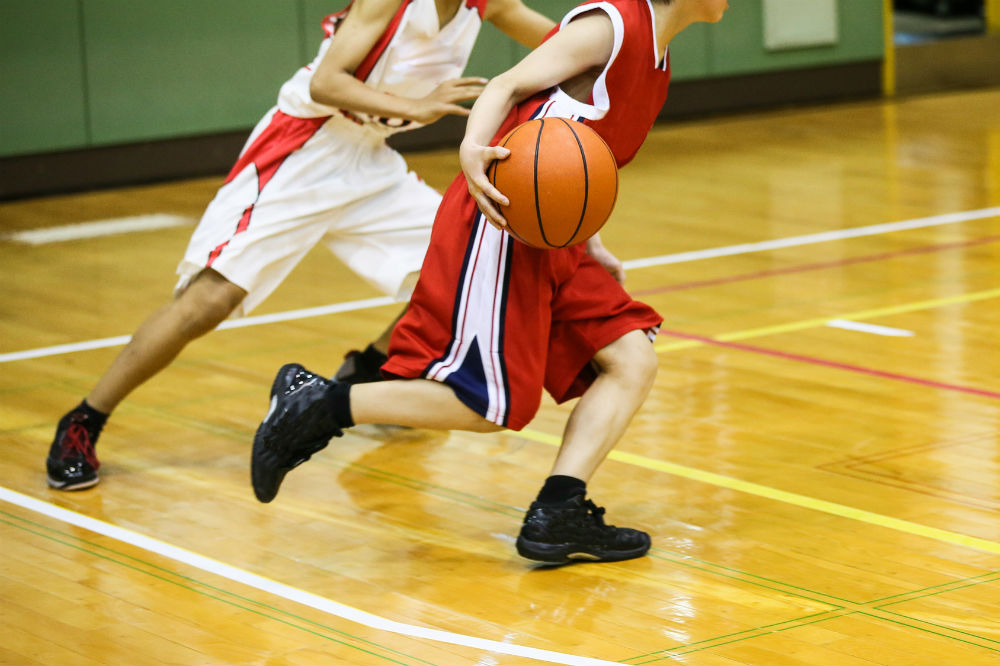
For this, you need something called muscular throwing force, which needs two important things, the first, the physiological force of the body, and the second, mastery without seeing the ball when throwing it.
Make The Throws Longer And Longer
If you need the ball to have a long reach from where you are and the point, you must have a strong arm, and for this, the exercise is required. With these exercises, your arms will have muscular resistance, elasticity, and power to dominate the throwing of the ball.
Always Look For Good Control Of The Ball
You need to have a good command of the ball, and this is obtained when point number 4 of this list has been achieved without a problem, and therein lies the importance of complying with the steps and advice mentioned, since one is correlated with another.
When you have passed the relevant evaluations in the strength of the arms and the mastery of the ball, in the second instance, you can gradually increase the intensity.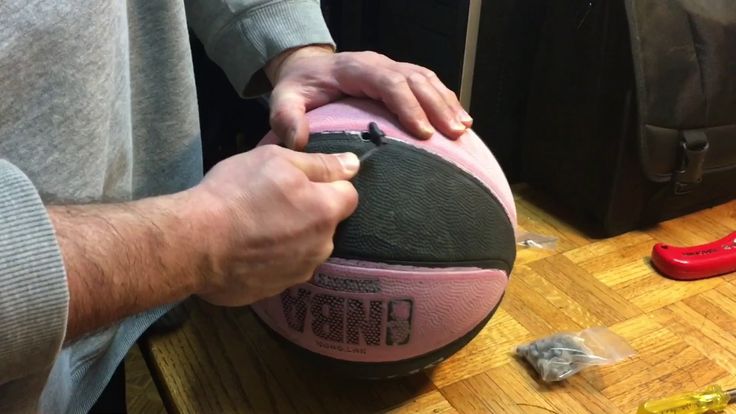 In other words, you can throw the ball farther and farther to see your motor responses.
In other words, you can throw the ball farther and farther to see your motor responses.
And if you need to refine your launches, you can go to the previous steps to see where the flaw is, what the problem is, and once you fix it to make a clean and smooth launch.
For you, this is one of the most important tips, because in the world of sports the ball is thrown from great distances. And that’s where people start to make a difference to others, all thanks to practice, focus, and desire.
Carrying Out Comprehensive Exercises Repetitively
You should know that comprehensive exercises are those that bring together everything that has already been mentioned. And as you carry them out, you will realize that what you are undertaking is being unconsciously put into practice.
And that is what is based and what is wanted for you, that your body already has a memory of everything you have practiced so that you gradually improve it and thus improve where you have very noticeable flaws.
Always Assess Where Your Failures Are
As you do the exercises, you must realize where the faults are to correct it early and that the body does not get used to them. Well, the failures are not positive at all and can present opposition in the performance of the person when playing.
You have the complete freedom of yourself to create the schedule with which to perform the exercises.
The important thing is that perseverance and perseverance are maintained because success goes hand in hand. And so the Ball-handling drills have the impact you want it to have on you.
Don’t Push Yourself As Hard, Work As Far As You Can Go
Do not demand more of yourself than you cannot give; your body and everyone has a learning limit, and over time you will give yourself how much of your limit. When this is already reached from there, you can not advance, because your body has already reached the maximum of your performance.
If you were to demand much more of yourself, you could have an involution, and you will lose what you have learned by straining the systems. That is something you do not want, so work and practice in the ball-handling drills as far as your body allows.
Create Your Workout Rhythm
No one other than you knows what time arrangements you have, so you should create your training rhythm after you have already passed the other training and coordination training.
Create the hours, the days and set the intensity and exercises to be carried out during personal and personalized training, so that your room works at its intensity and avoids fatigue and muscular fatigue, which requires considerable time to recover.
Create New Challenges
As you go through the custom performance, you can create your challenges such as passing scores, hitting balls, or combining both, so that the subconscious adapts to the challenges and seeks to overcome them.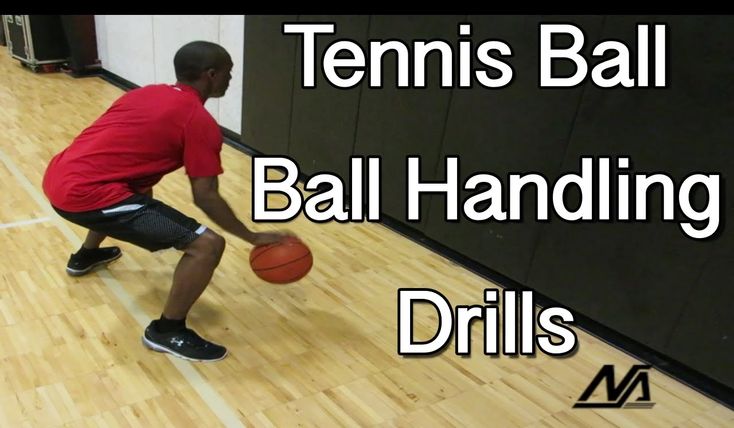
Never Lower Your Performance Level
You should always seek to maintain your performance level, and as you carry out the relevant exercises, you can assess whether you increase in performance or decrease.
To decrease, you only need to be trained to achieve your performance totally, and with the same performance, perpetrate it so that when you present professional tournaments or not, you can demonstrate your skills and the correct practices.
Evaluate If You Know How To Master Your Learned Skills Well
When you are in your training, you should also study the skills learned in the other training. And with this assessment, know if it was positive and your body responded well to them.
If not, you can correct them because that is what this advice is about, to assess and to have errors correct them to avoid that they adhere to the body and create a minority, which can considerably effect performance.
- Always Correct The Errors You Find
In personal studies, you have already done on your performance in personal training.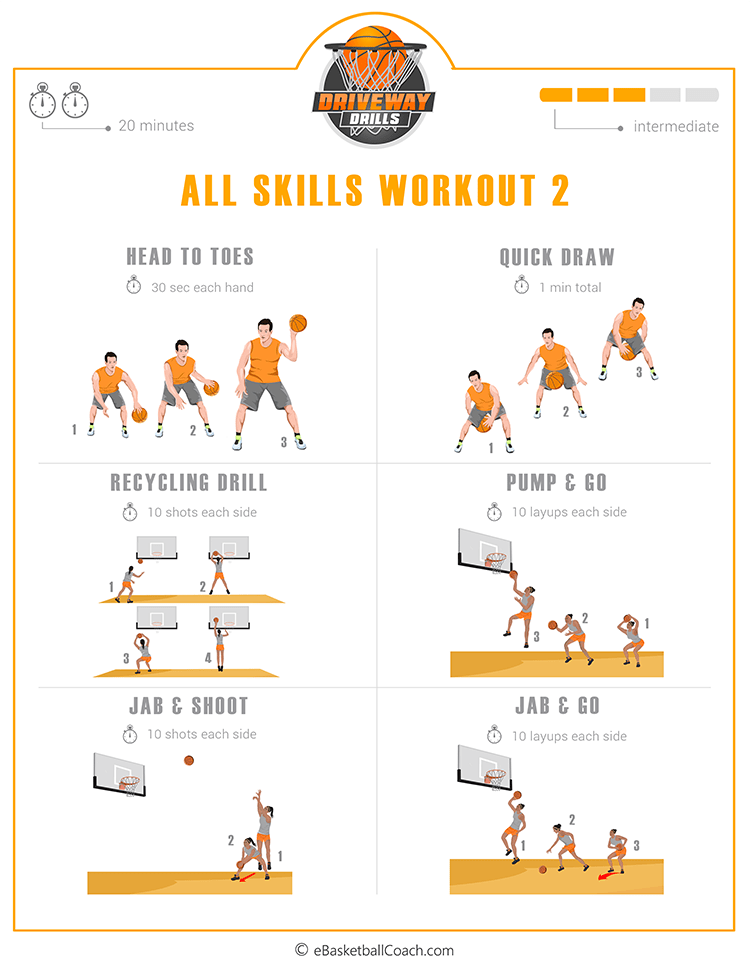 You must correct the errors found to prevent your body from getting used to it. And so you have what you have learned well polished, seeing the result when you are playing and achieving what you have learned and perfected in handling the balls.
You must correct the errors found to prevent your body from getting used to it. And so you have what you have learned well polished, seeing the result when you are playing and achieving what you have learned and perfected in handling the balls.
- Avoid Losing Coordination Learned During Training
Normally, the coordination between the hands and the cognitive system is lost as time passes. But they have to avoid that; it should not happen because you would be wasting all the time and dedication to learn it.
Therefore, the most positive way for you not to lose it is to do constant exercises and see how you respond. Keep what you have learned in practice and avoid losing the ability to dominate the ball without seeing it.
As you should also avoid decreasing the ability to throw the ball without having to see it, keeping your gaze fixed on the point you want to get the ball to. All this is based on practice, with improvement in training and above all, with perseverance.
- Don’t let a sedentary lifestyle take over you
One of how you must avoid the loss of the coordination and skills learned is by avoiding a sedentary lifestyle. You can’t stop training, that’s why you need a work schedule created with your own set-up time.
A sedentary lifestyle is the worst enemy of athletes, and when you want to learn to dominate your balls, you have to avoid it. Motivate yourself to train, create goals to meet, and reward yourself when you manage to exceed your expectations since it is something rewarding.
Keeping training also, together with perseverance and perseverance, is what will make success come. And for this, it is always necessary to avoid a sedentary lifestyle in its entirety. It is acceptable to take breaks, but do not take them over, because they will leave havoc difficult to eliminate.
Everything has its time, and in your life, you should spend a little time on something that will be positive for you. Your personalized schedules where you have full dedication to improve and correct the errors found are what make many stand out above the rest.
Your personalized schedules where you have full dedication to improve and correct the errors found are what make many stand out above the rest.
- Enjoy Your Games, Show That You Are The Best At Handling Balls
When the time comes for you to play, enjoy your games, and in them everything you learned. There at that precise moment, you will see the fruit of the time invested in improving. And you will not regret being constant and persevering.
Effectively performing on each shot, putting into practice the coordination learned and responding to the ball’s throw without seeing it. Managing to feel satisfied with yourself and want to continue improving in the sport.
5 Basketball Exercises to Move the Ball with Passes
There is nothing better than watching a team move the ball quickly and efficiently around the court without greed.
Overcoming the defense with smart passing the ball to each other, creating situations for open shots and passes is one of the great offensive techniques.
Want your team to do it?
Basketball passing exercises in this article will help you with this.
But first let me explain something very important...
There are two types of training exercises:
1. Technique for passing the ball.
2. Decision making during transfers.
Unfortunately, most coaches only focus on the "technical" aspect of training and forget how to train their team's decision-making ability when it comes to sharing the ball.
Your players will not improve their game passes by doing thousands of repetitions of chest passes.
While technical drills have their place, they are far less important than passing drills with decision making.
We must let the players learn how to read the defense and make the right decisions.
In addition, ball passing exercises are great for starting a workout to warm up your team and get them to communicate and work together.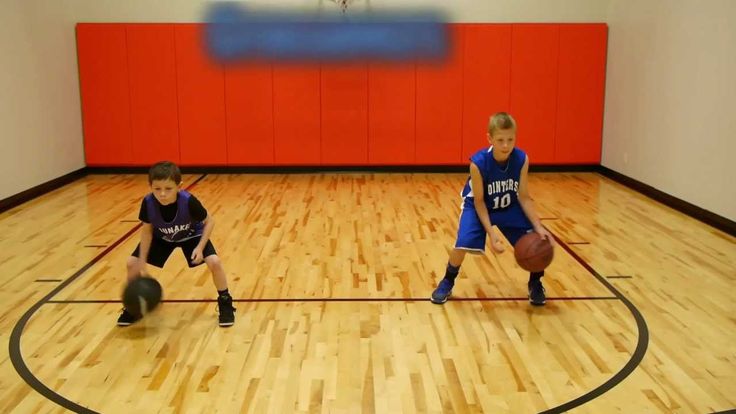
5 ball passing exercises.
1. Advance
How the drill works:
Players form 3 columns evenly distributed along the end line. The two outside players start with the balls.
3 players advance across the court passing the ball back and forth to the middle player and then finish the exercise with two shots from under the basket.
Purpose:
A fun passing exercise that works on catching and passing without running, with communication, timing, and shooting from under the basket at game speed.
Formation:
Players form 3 columns behind the end line.
Two players on the outside lines have balls.
Instructions:
3 players (1, 2 and 5) begin to move forward on the court. The 1st outside player passes the ball to the 2nd player in the middle line.
Immediately upon receiving the ball, the center line player returns the ball to the same player on the touchline.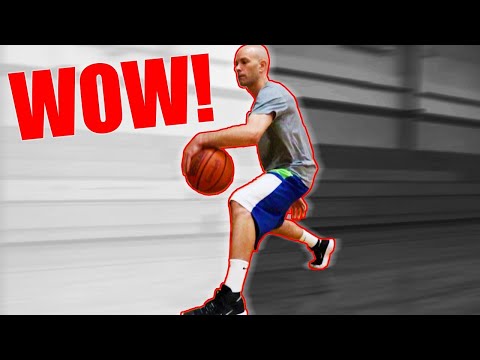
The 1st middle player then turns to the other side and receives a pass from the 5th outside player and immediately returns the ball to him.
Outside players may use 1-2 steps to avoid running.
The drill continues until the players reach the opposite 3-point line. When this happens, the two outside dribblers go to the basket and shoot.
The group then waits at the opposite end for the rest of the groups to complete the exercise before starting the exercise on the other side. On the right scheme at the top, the three players (4, 3 and 2) continue the exercise according to the scheme described above.
Options:
Medium or 3-point shots. Instead of ending with a run to the basket, players may end with mid-range shots or 3-point shots.
Back and forth - Instead of waiting at the other end, the troika can complete the drill both ways. Only now the threes are placed on both end lines and begin the exercise when the three from the opposite side return to their half of the court.
One Ball - If you are coaching very young players, you can run this exercise with one ball until the players understand how it works.
Coach's notes:
Passes must be passed on the move in front of the player using proper passing technique.
The receiver must hold his hands at goodie level, showing 10 fingers and calling for the ball to be passed to him.
The middle player must catch the ball and quickly pass the ball to a running partner. Don't run!
Shooting technique while moving from under the basket is very important in this exercise. Watch your footwork and make sure all players are doing it right.
2. Monkey in the middle
How the exercise works:
Players are divided into groups of three. Each group has one ball. The two transmitters lined up 12 to 15 feet apart. The third player in the group is the "monkey in the middle". He tries to hit or steal the ball. The two outside players must pass the ball to each other without using cross passes or dribbling.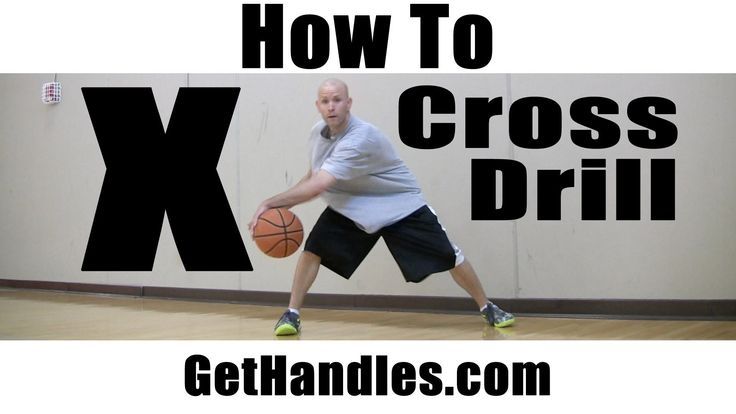 Simply turning and using feints to open up the passing line and pass the ball past the defender.
Simply turning and using feints to open up the passing line and pass the ball past the defender.
Goal:
A fun exercise that works on defense at the same time. This exercise will teach players how to use feints and turns to create a passing zone and also to protect the ball.
Lineup:
• Groups of 3 players.
• Each group has one ball.
• The passers are lined up 12-15 feet apart with the third player (back) in the middle.
Instructions:
1. The drill starts with the defender attacking the player who starts the drill with the ball.
2. The attacker uses feints and steps to pass to another attacker while the defender attempts to parry or intercept the pass.
3. After each pass, the defender rushes towards the ball carrier and tries to press the ball again.
4. When the defender recovers the ball or kicks the ball, the players change positions.
Variations:
Change after a certain time - Players can change positions
after a certain period of time (depending on the age of the players, their strength and stamina), and not after each interception and elimination.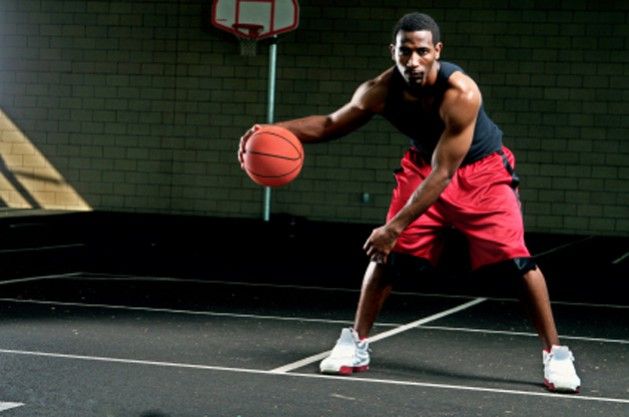 For example, 30-40 seconds.
For example, 30-40 seconds.
One dribbling available. Let the attacking players hit the ball once to the floor to open up the passing corner. It will be tougher for the defender.
Only bounce passes allowed - in order to make it more difficult for attackers, allow them to only bounce passes.
Notes:
• It is very important for a defender to have active arms and legs at all times. This is the best way to intercept.
• Passing players must wait for the defender to recover before making the next pass. The purpose of the training is to learn how to pass and create passing angles.
• If there is no set time, the offensive player must not hold the ball for more than 5 seconds without passing the ball.
• No passing in an arc! They make the drill too easy for the attackers and will not lead to improvement.
3. Swing passes
How the exercise works:
The team is divided into 4 groups in the corners on half the court.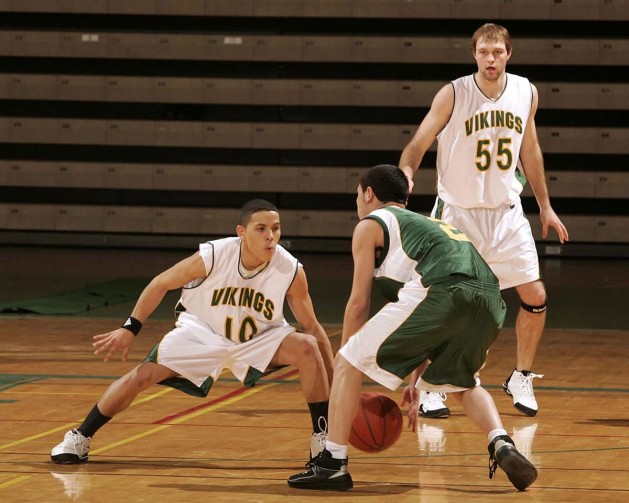 The players make a pass to the player on the right, who start running along the sideline towards the endline. The sender then joins the end of the column into which he passed the ball.
The players make a pass to the player on the right, who start running along the sideline towards the endline. The sender then joins the end of the column into which he passed the ball.
Purpose:
A drill intended to be used primarily with young players or as a warm-up. This training will improve passing the ball on the move, as well as improve reception and passing without dribbling.
Lineup:
• The team is divided into 4 groups. One group located in each corner.
• The first player in one of the groups has the ball.
Instructions:
1. The drill is started by ball carrier 02 passing the ball 01 to the player on the right.
2. Before passing the ball, the receiver must start running in the direction of the next group, where he will make the next pass of the ball.
3. 01, having received the ball, passes it to player 05, who starts a dash towards 03.
4. After each pass, the passer joins the end of the group where the ball was passed.
5. The exercise continues according to the same scheme with passes and jerks of the players along the square in the same direction.
6. After a certain period of time, the coach changes the direction of the passes.
Options:
Turn on the second ball. If the players perform confidently, then you can enter the second ball in the opposite corner.
Various types of passes - The drill can be performed with one or two hand passes, bouncing, etc. One Dribbling - Players are allowed to make one dribbling before passing to the next player. This can be useful if you are passing with one hand.
TIPS:
• The receiver does not need to slow down or speed up to catch a transmission. Transfers must be accurate, timely and forward.
• The receiver must initiate the snatch in a timely manner with arms outstretched to assist the passing player in making a timely and accurate pass.
• It is very important that you do not make any mistakes during the exercise.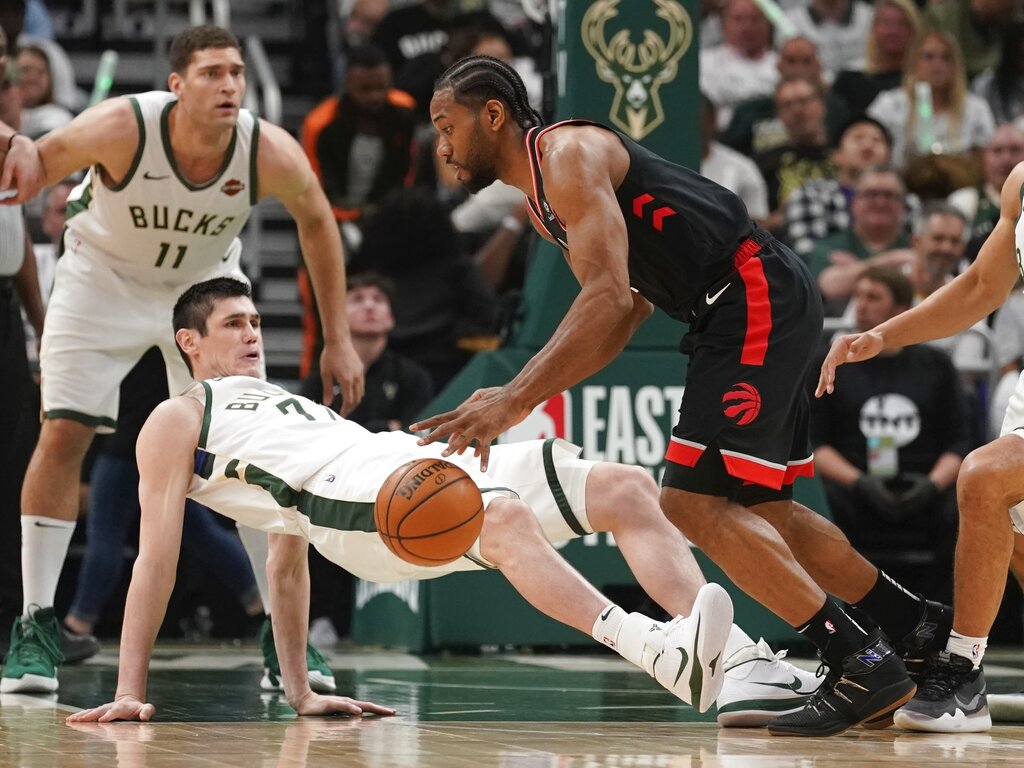 Don't let them fall into this bad habit.
Don't let them fall into this bad habit.
• Begin the exercise at medium speed at the beginning until the players understand it. Then increase the intensity.
4. Bronze gears.
How the drill works:
Starting at the end line at the edge of the penalty area, pairs of players pass the ball back and forth using different passes as they run across the court to the other end line. When they get there, they move closer to the touchline and come back using various passes over the players in the middle of the court.
Purpose:
An excellent warm-up that provides many passes in a short amount of time. Including passes of various lengths and types for players in training.
Line-up:
• All players find a partner.
• Each pair has one ball.
• Pairs split into two columns behind the endline at the edge of the SR.
Instructions:
• 1. The first pair move to the opposite side at a slow pace in the middle of the court, passing the ball from the chest to each other.
The first pair move to the opposite side at a slow pace in the middle of the court, passing the ball from the chest to each other.
• 2. As soon as the first pair is closer to the 3-point line, the next pair starts.
• 3. When the first pair of players reach the opposing endline, they move to the touchlines and return, passing the ball over the pairs of players moving in the middle of the court.
• 4. When the players return to their starting position, they rejoin the pairs in the middle of the court and continue continuous training.
• 5. Every couple of minutes, change the type of passes players make for middle pairs and outside pairs.
Options:
Gears for pairs in the middle. For the mid lanes, there are several types of passes that I recommend: from the chest, with a rebound, one-handed from the chest, and one-handed with a rebound.
Outline Passes - For outside lines there are several types of passes that I recommend: chest passes, overhead passes, one hand passes.
Remember to consider your team's age, strength and skill level when deciding which passes they should use during practice.
Tips:
• Follow the pace of the exercise; especially if it is used as one of the warm-up exercises. Walking should not be allowed, but too much traffic should also be avoided. Accurate transmission is the main focus of training.
• Players on the outside lines must not make too many passes in an arc and with a very high trajectory on their passes. They should be at a height that is safe enough not to hit the midlines, but straight enough to reach your partner quickly.
• The ability to pass the ball with either hand is an important skill to develop. Expect mistakes when your players first perform a drill, but make sure you train them properly.
• Footwork is very important during this workout. Players must be able to catch the ball and pass back to their partner in two steps. If you are training young children and they cannot pass the ball at speed yet, slow down the pace of the exercise.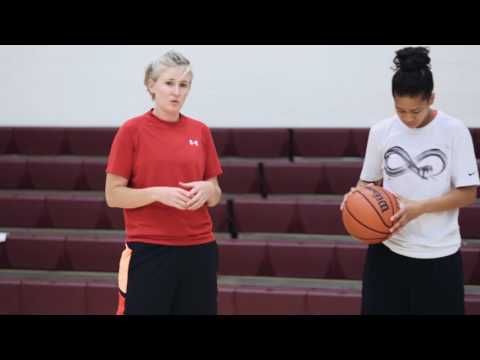
• After each run around the court, the players must switch to the sides so that they practice passing short and long passes from both sides of their body.
5. Netball
How the exercise works:
regular battle without dribbting the ball is allowed at any time. Games can be played 3 on 3, 4 on 4, or 5 on 5.
Target:
An excellent exercise that improves not only passing the ball, but also moving without the ball, positioning, jerking, etc. This exercise will lead to less use of dribbling in games and fewer losses.
Lineup:
• Divide the players into two teams based on the number of players available for training.
• Try to make teams of the same height and skill level.
• Only one ball is needed for training.
Instructions:
1. Teams play normal full game - no dribbling!
2. The exercise is performed within the time specified by the trainer.
3. Start with the arrangement shown in the diagram.
Point system:
• The game is played up to either 5 or 11 points.
• Each 2-point roll is worth 1 point.
• Each 3-point roll is worth 2 points.
• Must win by 2 points.
• In the event of a shooting foul, the offensive player throws one free throw for 1 point.
Variations:
One Shot Allowed - Players are allowed 1 dribbling when they gain possession of the ball. This is not a requirement, just an option.
Only bounce passes allowed - Restrict your players to only use bounce passes.
3 teams. The exercise starts by dividing your team into 3 groups of 3 to 5 players. Two teams start defense in each half. The third team is in the middle of the court on offense. The offensive team chooses one side and tries to score the ball without dribbling. Same scoring system as above. After a goal is scored or the possession of the ball is changed, the defensive team receives the ball, attacks in the opposite direction. The previous offensive team may play defense up to the center line of the court. Play until one team reaches 5 or 11 points.
The previous offensive team may play defense up to the center line of the court. Play until one team reaches 5 or 11 points.
Tips:
• It's very important to give players instructions on how to set up wide and run smart to get the ball.
• If you need to step in to make adjustments or re-emphasize the most important points of the exercise (distance, snatches), step in but keep it short.
• All passes must be at least 3 feet long. Don't let the players run up and pass the ball from each other's hands.
• Footwork is important in this exercise. Make sure the players are not running and that they are using turns correctly.
• Players must speak and use raised arms when rushing to the basket to receive the ball.
V. Melnichuk Even if you are a novice basketball player, we will not give you a training plan, but we will tell you why the ball flies anywhere but into the ring and into your hands. It's all about technique: even with regular training and perseverance, novice adults and children often make simple mistakes. It's a shame, let's fix it. Below are 11 life hacks on how to hone your technique to increase the likelihood of a goal for your team.
It's a shame, let's fix it. Below are 11 life hacks on how to hone your technique to increase the likelihood of a goal for your team.
Basketball Shot Rules for Beginners
1. Hands up
In pursuit of the attacker, raise your hands, even if you are standing with your back to the pass, and even more so if the ring is in front of you. Your raised hands will increase the chance of intercepting the ball from the opponent by 2 times. Don't overlook this little thing!
2. Make shield throws
Even Tim Duncan did not neglect them! A square is drawn on the basketball backboard. If you are standing opposite the ring, then aim at the middle of the upper part of the square, if you are standing on the side, then at the corner. If you hit this square, then the ball is at 90% of cases will fall into the ring. The law of physics and no cheating!
3. Look at the ring, not at the ball
Practice driving the ball with your hand, not your eyes, develop tactile control.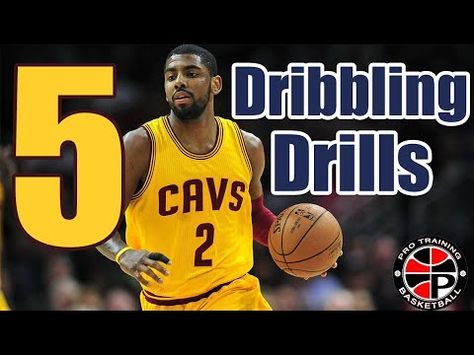 Your eyes should be on the hoop while dribbling and be aware of the position of your body in relation to the hoop. Then you will be able to take the correct posture, and the throw will be effective.
Your eyes should be on the hoop while dribbling and be aware of the position of your body in relation to the hoop. Then you will be able to take the correct posture, and the throw will be effective.
4. Dribble with your fingertips only
The palm should not touch the ball, only the pads of the fingers. Dribbling should become familiar to you, like an extension of your hand. Then you can change its trajectory at any time and you will have more chances to score goals. Practice with the ball constantly.
5. Throw with one hand
If you throw the ball with two hands, you reduce the chance of hitting the basket. All the efforts of the throw are in one hand (in the right for right-handers, in the left for left-handers). The other hand only holds the ball, the leading one holds it with the fingers, not the palm.
6. Do not jump when protecting the ring
Jumping is the main mistake of rookie defenders. To intercept the ball and block the shot, simply stick out your hands. When you are in a jump, the attacker will easily bypass you.
When you are in a jump, the attacker will easily bypass you.
7. Don't look back
When you dribble, don't look back, but dribble and aim for the ring, focus on shooting (or passing to another player on your team).
8. Bring the throw to automatism
Incorporate the most basic basketball techniques into your training plan and bring the shot to automatism. Throw first from a distance of half a meter from the ring, gradually increasing it. Learn to throw the ball so that it hits the hoop without touching the edge.
Throw the ball with all fives and jump
Throwing Rules:
- Head in the center of the body - if tilted, accuracy is lost.
- Look at the ring: mentally build a trajectory. If you are far away, the ball flies in a curved curve with a maximum height of 2 meters above the hoop.
- A strong hand is in front and throws, a weak hand is on the side and directs, only holding the ball. The elbow of the throwing hand must be in line with the ring.
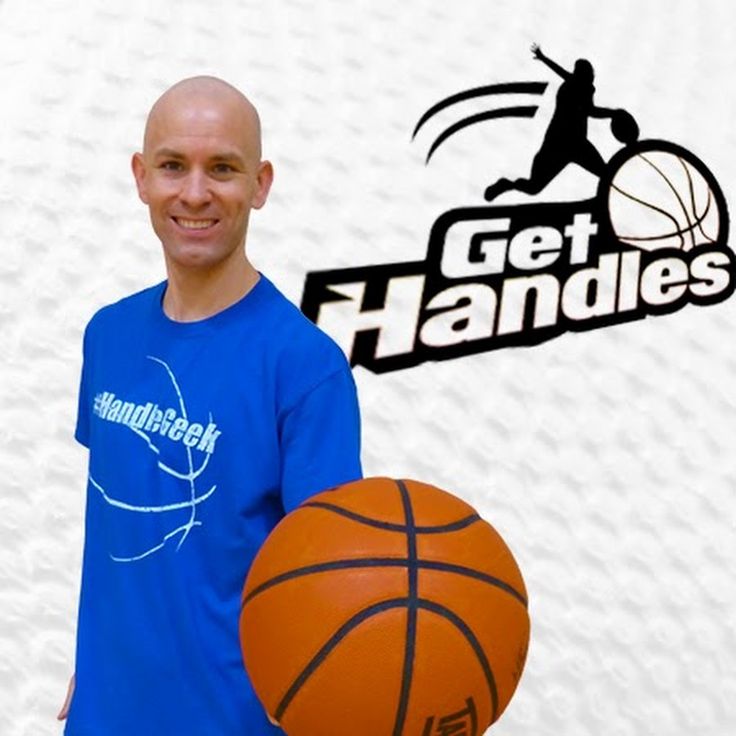
- The ball must rest on the fingers without touching the palm. The fingers are as far apart as possible and grab the ball.
- Throwing arm bent 90 degrees, forearm perpendicular to the floor. If you bend less, then you get not a throw, but a throwing of the ball horizontally.
The main thing in the throw is the position of the body and its balance. Place your feet apart and parallel to each other: it is important to orient them in the middle of the basket. Then the direction of the body during the jump will coincide with the direction of the throw, and the ball will fly straight into the ring. When the feet are uneven, the ball flies in the wrong direction or does not reach (although the throw was normal).
Take a deep breath and release as you exhale.
How to hold the ball and shoot in basketball
How to throw correctly: straighten your arm, point your wrist up, and with your hand set the ball to rotate in the opposite direction from the flight.